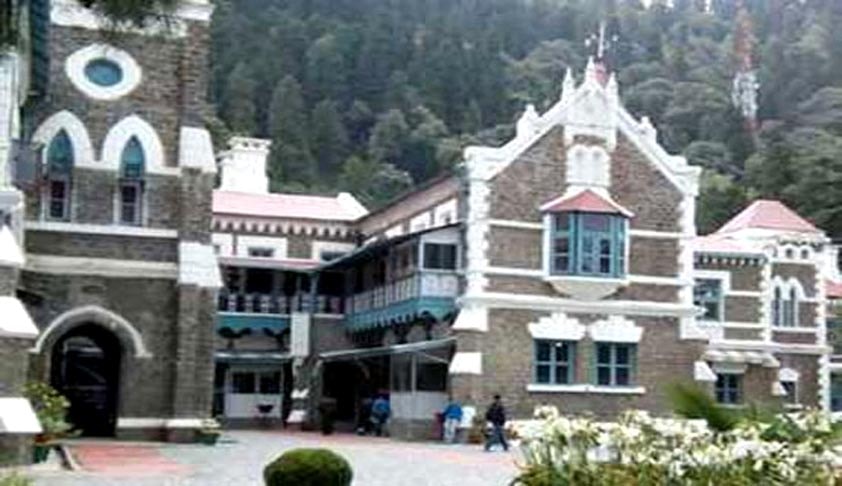Uttarakhand Case: Towards a new jurisdiction?
Adv. Kaleeswaram Raj
24 May 2016 3:54 AM GMT
The Uttarakhand High Court judgment that invalidated the President’s rule in the State is emblematic in several respects. The judgment by the Division Bench that runs into 99 pages is, to an extent, a reiteration of Bommai (AIR 1994 SC 1918) as regarding the imperativeness of the floor test. But the judgment indicates a leap further when it dealt with the mandate of the 10th Schedule of...
The Uttarakhand High Court judgment that invalidated the President’s rule in the State is emblematic in several respects. The judgment by the Division Bench that runs into 99 pages is, to an extent, a reiteration of Bommai (AIR 1994 SC 1918) as regarding the imperativeness of the floor test. But the judgment indicates a leap further when it dealt with the mandate of the 10th Schedule of the Constitution that embodies a procedural therapy for defection.
The litany of the events is captivating. The Division Bench of the Uttarakhand High Court delivered the judgment on 21.4.2016. On the same day the Special Leave Petition (SLP) was filed by the Centre and it was considered by the Supreme Court on 22.4.2016. On that day the Supreme Court requested the High Court to provide a copy of the judgment dated 21.4.2016 to the parties by 26.4.2016. The summit Court further directed to file the judgment before it, by 26.4.2016. On the very same day the Court directed that “the judgment of the High Court shall remain in abeyance till 22.4.2016”.
Order XVI Rule 4(f) (ii) of the Supreme Court Rules, 1966 indicates that the certified copy of the judgment and order which are impugned would be an integral component of the SLP. Sub Rule 5 under the same Rule clarifies that “the (special leave) petition shall be accompanied by …. a certified copy of the judgment or order appealed from.”
In view of this position, it is clear that the SLP filed by the Centre did not comply with the mandate of Order XVI Rule 5. In the SLP, petitions for exemption from filing certified copy as well as plain copy of the impugned Order were filed by the Centre. In the exigencies of the situation there might have been sufficient justification for the Centre to move the SLP in a hurry. The Court also thought it fit to grant the interim Order in the peculiar situation available. But such ‘procedures’ should not become the new normal in the Supreme Court.
The Division Bench of the High Court also has contributed to such a situation by not ensuring availability of the judgment on the date of its pronouncement. After the pronouncement of the judgment only minor corrections are permissible. In Surendra Singh and Ors v. State of UP AIR 1954 SC 194, the apex Court held that once the judgment is pronounced in open Court no material changes could be made. Nor it was made in the Uttarakhand judgment. As such it is always desirable to pronounce the judgment as corrected and finalised and to provide the copy of it on pronouncement. This is all the more so when the matter may be subjected to further scrutiny by the apex Court.
Justice K M Joseph is an erudite judge and so is his companion on the Bench, Mr. Justice V.K. Bist. The Bench wanted to deliver a perfect verdict as turned out. Ideally, the judges always try to perfectise their thoughts which however would be tested by their times. As put by Benjamin N. Cardozo-“I sometimes think that we worry ourselves overmuch about the enduring consequences of our errors. They may work a little confusion for a time. In the end, they will be modified or corrected or their teachings ignored. The future takes care of such things. In the endless process of testing and retesting, there is a constant rejection of the dross and a constant retention of whatever is pure and sound and fine.” (The Nature of the Judicial Process).
Procedural Law has a substantial content. It is curious to note the procedural deviations in a case of great constitutional importance. This occurred at 3 terminals – (1) when the Division Bench pronounced the judgment without delivering a final copy, (2) when the SLP was entertained without a copy of the judgment assailed and (3) when Orders were issued without seeing the impugned judgment. As said by Thurman W. Arnold, “Procedure on the other hand , is entirely practical. It always needs, not logic, but change in the light of practical details. It is based on the experience of the ages also, but age with it is senility, not wisdom.” (The Role of Substantive Law and Procedure in the Legal Process,Yale Law School, 1932).
In Rani Kusum v. Kanchan Devi (2005) 6 SCC 705 the Supreme Court held:- “All the rules of procedure are the handmaid of justice. The language employed by the draftsman of processual law may be liberal or stringent, but the fact remains that the object of prescribing procedure is to advance the cause of justice. In an adversarial system, no party should ordinarily be denied the opportunity of participating in the process of justice dispensation. Unless compelled by express and specific language of the Statute, the provisions of the CPC or any other procedural enactment ought not to be construed in a manner which would leave the Court helpless to meet extraordinary situations in the ends of justice.”
In my view, the procedural methodology adopted in the Utharakhand Case does not look ideal. If it sets a precedent, one would only be worried.
However, the Court thereafter suggested the Union to have the floor test, a suggestion which according to the Attorney General, was ‘seriously considered’ by the Centre. Thereafter, recording ‘no objection’ from the AG the floor test was ‘directed’. It was rather a conceded order. To quote from the Supreme Court order, “learned counsel appearing for both sides have debated over the suggestions that have been given by the Court as well as by each other, some time with appreciable amity and sometimes with some cavil, but eventually there has been some agreement”.
Thus special session of the Uttarakhand Legislative Assembly was held on 10.5.2016 as ‘agreed’ and ‘ordered’, with the sole agenda relating to vote of confidence. Harish Rawat came back. The sealed cover was opened and a formal endorsement of the outcome of the floor test followed.
Earlier, as born out from the records, the Attorney General had raised a forceful contention that the Court should decide the validity of imposition of President’s rule under Article 356 of the Constitution. He had argued that “there cannot be a President’s rule and a floor test at the same time”, which indeed is a formidable point.
Assuming that the Centre did not concede for a floor test, the method now adopted by the Supreme Court would not have been possible. If the Centre was ready for a floor test, why it objected to the floor test ordered by the High Court and sought a stay is difficult to comprehend.
The fact of the matter is that the Supreme Court did not come down heavily on the Centre in the Uttarakhand issue. In the JNU context Anil Nauriya had criticised the Supreme Court for not being sensitive and responsive (Mainstream 5.3.2016). He elaborates on various incidents to show that there is “a time of test for the judiciary in India.” Methodology adopted by the apex Court in dealing with the Uttarakhand case reflects a conciliatory jurisdiction, rather than review jurisdiction. The nation expected much more from the apex Court, especially in the light of the Bommai judgment where constitution bench categorically said that the floor test is the ultimate test and misuse of Art 356 is antithetical to the ethos of the Constitution. However, one would think that the High Court judgment though slightly late in its manifestation, was correct and comprehensive in its content. That surpassed the apprehension of Benjamin Cardozo. And this is the finest part of L’ affaire Uttarakhand!
 The author is a lawyer in the Supreme Court and Kerala High Court.
The author is a lawyer in the Supreme Court and Kerala High Court.


